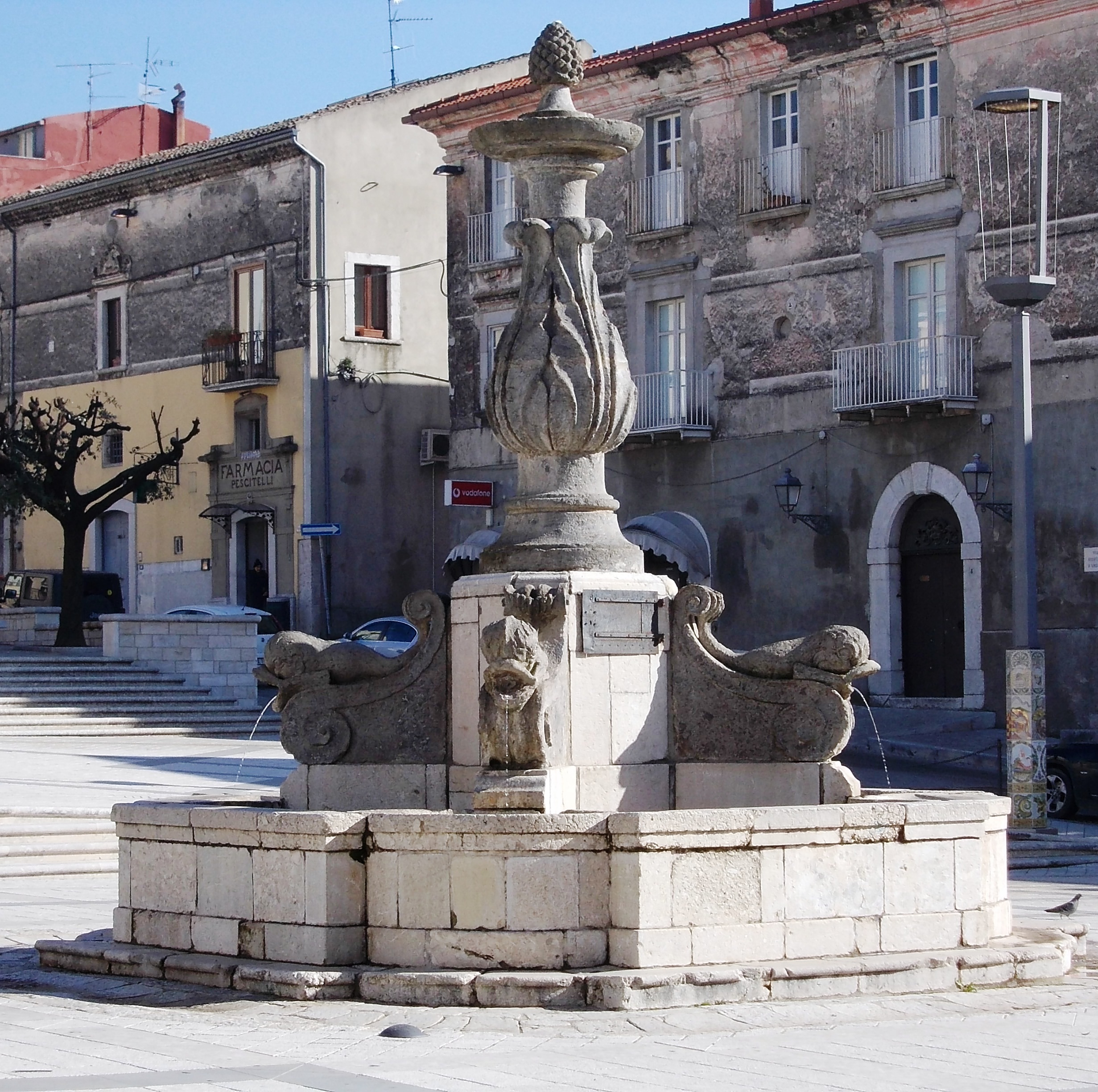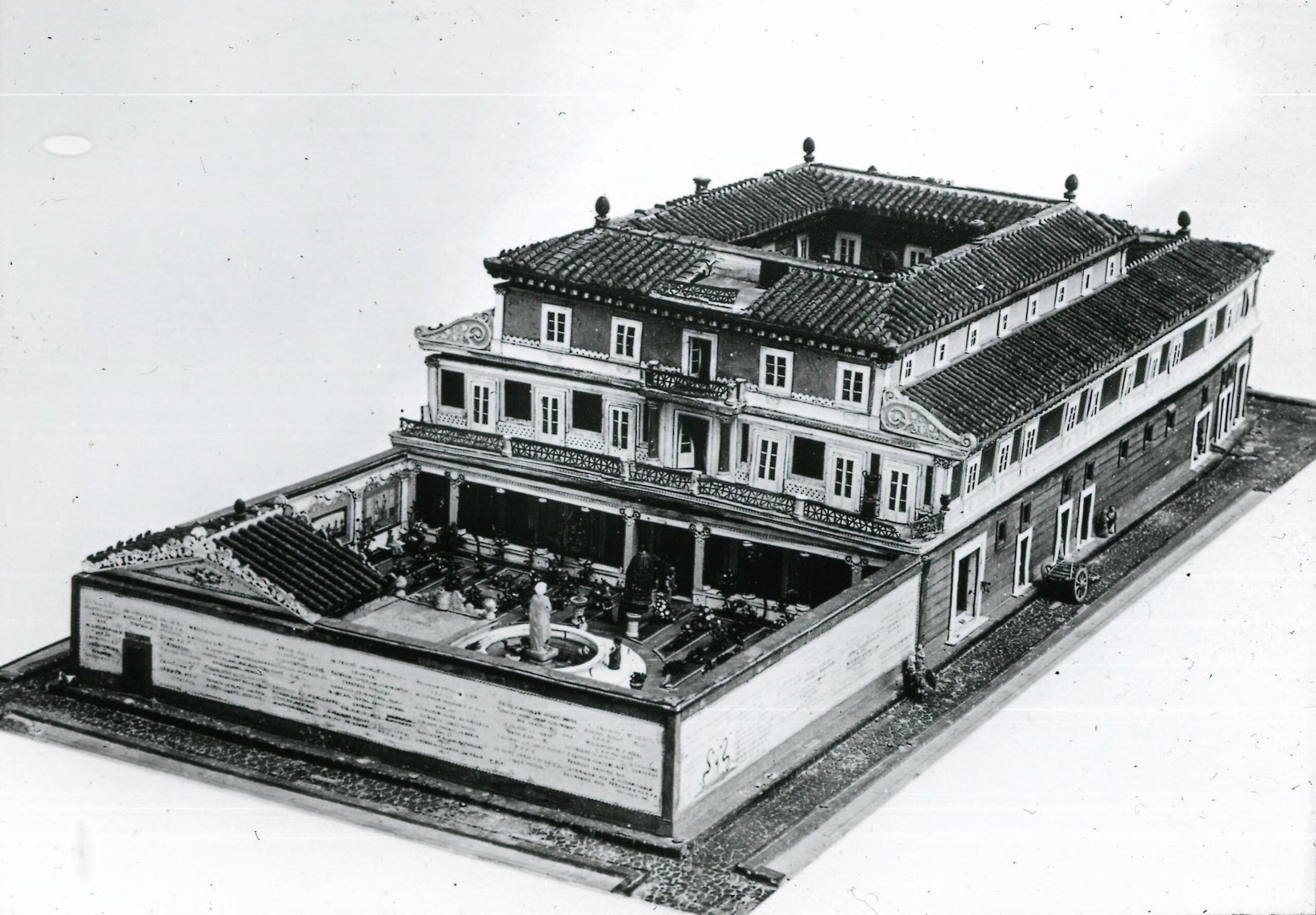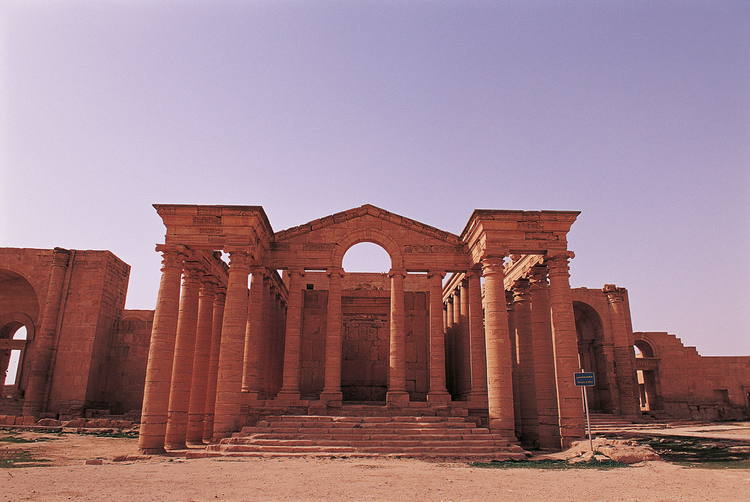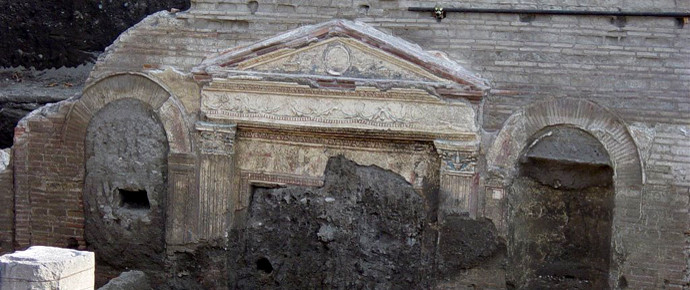This is a typical ‘atrium style’ house, although rather smaller compared to other grandiose dwellings. The name comes from the mosaic emblema in the tablinum, depicting the scene of a theatre rehearsal by a choir of satyrs,now at the Naples Archeological Museum along with other paintings of Admetus and Alcestis and episodes from the Iliad: all that are remaining are those of the oecus (living room) depicting Ariadne abandoned by Theseus and a nest of cherubs. At the entrance to the house is the famous mosaic with a chained dog and the message CAVE CANEM (beware of dog), typical of other dwellings in Pompeii:this warning is also recalled in literary sources, such as in the entertaining episode of Petronius’s Satyricon, in which the protagonist is frightened to death by the large painted dog.This is the house, at the time just uncovered (1824-1825), that served as a model for the home of Glaucus in the novel by E. Bulwer Lytton, The Last Days of Pompeii (1834)













